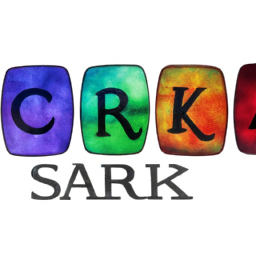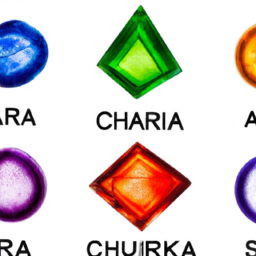
Chakras, the energy centers within our bodies, have been a part of ancient traditions and spiritual practices for centuries. They have gained popularity in recent years as the focus has shifted towards holistic healing and mindfulness practices. But where exactly did the concept of chakras originate from?
The word “chakra” comes from the Sanskrit language, which means wheel or disk. In Hindu and Buddhist traditions, chakras are seen as spinning wheel-like energy centers that are responsible for our physical, emotional, and spiritual well-being. They are believed to be the key to achieving balance, harmony, and enlightenment.
Although there are many variations and interpretations of the chakra system across different cultures and traditions, the earliest mention of chakras can be traced back to ancient Indian texts known as the Vedas. These texts, dated around 1500-500 BCE, describe chakras as energy centers located at specific points along the spinal column.
The concept of chakras, however, goes beyond just ancient texts and scriptures. It is deeply rooted in the belief and understanding of vital energy or Prana in the Hindu tradition. This vital energy is said to flow through the body, nourishing and maintaining our physical, emotional, and spiritual state. The chakras act as junction points for this energy, helping it flow freely and keeping our mind, body, and soul in balance.
Another important mention of chakras can be found in the ancient Indian system of yoga. According to yoga philosophy, there are seven main chakras, starting from the base of the spine to the crown of the head. These chakras are associated with different elements, colors, sounds, and emotions. Each chakra represents a different aspect of our being, and when they are balanced and aligned, we experience a state of harmony and well-being.
As the concept of chakras spread, it found its way to other spiritual and healing practices such as acupuncture, Reiki, and Ayurveda. In Traditional Chinese Medicine, the meridian system, which is similar to the chakra system, is believed to be responsible for the flow of energy in the body.
Today, with the growing interest in alternative healing and spiritual practices, the concept of chakras has gained widespread popularity. It has been incorporated into different forms of meditation, mindfulness practices, and self-care routines to promote a deeper understanding and connection with oneself.
However, it is essential to note that the concept of chakras is not based on scientific evidence, and it is a matter of personal belief and interpretation. While some may view them as literal energy centers, others see them as metaphors for understanding the mind and body connection.
In conclusion, the origins of chakras can be traced back to ancient Hindu and Buddhist texts, where they were seen as energy centers for achieving balance and enlightenment. As the concept spread, it evolved and found its way into various spiritual and healing practices, becoming an integral part of many people’s lives. Whether you believe in chakras or not, the idea of inner balance and harmony is something we can all aspire to.





Interesting topic, I’m curious to see what people say!
AsafDurak: Wow! I’ve heard of the idea of Chakras, but never really researched where it came from. This should be a very interesting read! #excited
Chakras have been around for centuries, the ancient practices of yoga and Ayurveda dating back to India in 1500 BC encompass the chakra system. #knowledge